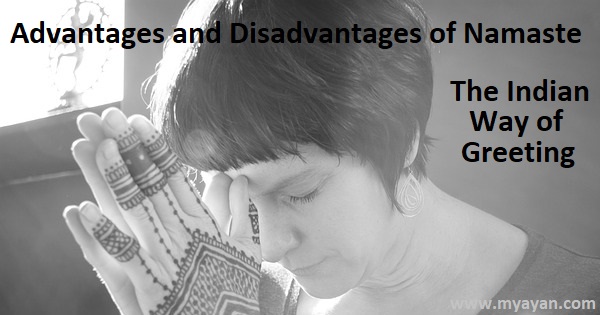Namaste- “I Bow to the Divine in You,” is how you welcome and greet your guests and relatives in Hindi. Namaste is used to acknowledge known and unknown people as a salutation. This gesture expresses honor, courtesy, and gratitude to the person you greet. According to different Indian scriptures. Namaste has interpretations, but when it comes to modern times. Today, you can perceive its significance and meaning as a way of treating others the same as the divine regardless of the religion, and beliefs.
Rooted in ancient Indian language Sanskrit, Namaste combines two words and gestures into one offering. Namah (to bow) and te (you), meaning “I bow to you.” The word Namaha can also be interpreted as "na ma" (not mine). This greeting gesture also bears a spiritual significance of negating or diminishing your ego in the presence of another human.
My soul honors your soul.
I honor the place in you where
Where the entire universe resides.
I honor the light, love, truth,
Beauty and peace within you,
Because it is also within me.
In sharing these things
We are united, we are the same,
We are one.
Many western countries consider physical contact (kissing or handshaking) gestures as the best ways to greet people. That surely signifies affection and great respect to the receiver. But when in a situation like an infectious disaster, these welcoming gestures are usually not considered safe to practice.
Many world leaders have also adopted Namaste as the safest way to greet visitors and guests while meeting and seeing off. In the wake of the spread of contagion disease, many citizens have come to know the health benefits of Namaste Greeting eventually.
Among many Asian countries, Namaste Gesture is predominant in India where worshippers use to practice it to offer prayers to the divine. So, if you wonder why is this gesture so important to greet humans? Just give a think to the notion that humans are universally attached to each other by the soul.
Every soul resembles divinity and elementary piousness, connecting with each other through a sense of oneness is what Namaste Greeting stands for.
This gesture is made bending your arms upwards at the elbow, with face closing both the palms and fingertips of both the palms touching closely.
Sync the word Namaste while bowing and offering this hand gesture.
Energy flows through the pointy ends. The human body houses certain levels of both negative and positive energies that fluctuate at different levels. The resonating energy can be neutralized by bringing both hands closest transfer the positive energy to the lower level.
Practicing the Namaste gesture while greeting people is also helpful to bring your unrested energy to a balanced state.

Namaste refers to, “I bow to you,” generally. Though its spiritual meaning is based on different interpretations deduced in the vedic scriptures. The most comprehensible meaning of namaste is “the divine in me respectfully recognizes the divine in you,” invoking a feeling of spiritual oneness of the greeter and the receiver.
If you are a younger person, the common response to Namaste is Namaste Ji. If you are a senior, the response to Namaste is Be happy or God Bless You.
Rooted in ancient Indian culture, Namaste comes from Sanskrit meaning “I bow to you,” whether you meet or part with people. The gesture invokes peaceful practices through humility and honoring others.
● Greeting Namaste promotes equality for all.
● It is the most Hygienic way to greet people.
● The scientific, psychological, and spiritual significance of Namaste greeting is the same if offered from a distance.